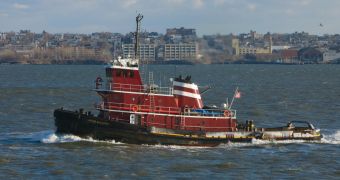You can't blame global warming on maritime vessels alone but they are most certainly responsible for quite a large chunk of the total amount of greenhouse gases and soot emitted into Earth's atmosphere every year. Tugboats were recently found to emit more soot than any commercial vessel in relation to the consumed amount of fuel, while cargo ships emit more than twice the previously estimated amount of soot.
This brings even more bad news for the Arctic ice sheet, expected to melt all away in as little as one to ten years, as last year the Northwest Passage became navigable for the first time in history, allowing more commercial ships to pass through the respective region, further accelerating the melting process of the Arctic ice.
The dark carbon particles emitted not only help increase the global temperature, but they can also locally influence the temperature by altering the cloud formation and precipitation patterns. Estimates place the total amount of soot released every year by commercial vessels to a staggering 130,000 tons, equivalent to 1.7 percent of the global amount and they say it is expected to rise in the near future as the maritime shipping industry is predicted to grow by as much as six percent per year.
According to the National Oceanic and Atmospheric Administration and the University of Colorado, a typical tanker produces half a gram of soot for every kilogram of burned fuel, while tugboats contribute with an amount nearly twice as large.
"Tugboats are a huge source of black carbon that may be under- reported or not reported at all in emissions inventories compiled by ports," says Daniel Lack of NOAA's Earth System Research Laboratory (ESRL) and the NOAA-CU Cooperative Institute for Research in Environmental Sciences.
This is a direct consequence of the use of low quality fuel and relatively low maintenance engines, having a considerable impact on the air quality in the surrounding areas.
"Commercial shipping emissions have been one of the least studied areas of all combustion emissions. The two previous studies of soot emissions examined a total of three ships. We reviewed plumes from 96 different vessels," says Lack.
A similar study carried out last year proved that soot pollution determined premature deaths across the coastlines of Europe and Asia.

 14 DAY TRIAL //
14 DAY TRIAL //